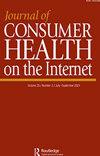普通口腔医学网站中口腔正畸治疗信息的内容分析
IF 0.7
Q4 PUBLIC, ENVIRONMENTAL & OCCUPATIONAL HEALTH
引用次数: 3
摘要
摘要本调查的目的是评估澳大利亚普通牙科诊所网站上包含的正畸信息的内容、质量和可读性。采用了在线搜索策略来确定要进行评估的实践网站。检查符合纳入/排除标准的网站是否存在预先确定的正畸治疗相关项目。三个经验证的健康信息质量和可读性工具被用于网站内容评估。共有231个网站符合纳入/排除标准。平均整体[SD]DISCERN得分为29.87(6.03)/80,[95%CI:29.09–30.65]。大多数网站(88.3%)的DISCERN信息质量得分较差或非常差。大多数网站描述了正畸透明矫正器治疗(91.3%)。69.3%的网站提供了Invisalign®的相关信息,22.5%的网站提供的是肌功能治疗。只有7(3%)个网站表示正畸保留是不确定的。Gobbledygouk(SMOG)的平均[SD]简单测量评分为10.10[1.31],(95%可信区间:9.95–10.25)。SMOG和Flesch Reading Ease评分密切相关(r = −0.9041;95%置信区间:-0.93至-0.88;p < 0.0001)并且表示难以读取的信息。内容作者应考虑使用高质量的信息和可读性工具,以确保读者访问高质量和可读的信息。本文章由计算机程序翻译,如有差异,请以英文原文为准。
A Content Analysis of Orthodontic Treatment Information Contained within the Websites of General Dental Practices
Abstract The purpose of this investigation was to evaluate the content, quality, and readability of orthodontic information contained on the websites of general dental practices located in Australia. An online search strategy was adopted to identify practice websites for evaluation. Websites satisfying inclusion/exclusion criteria were checked for the presence of pre-determined orthodontic treatment-related items. Three validated quality of health information and readability tools were applied for website content assessment. A total of 231 websites satisfied inclusion/exclusion criteria. The mean overall [SD] DISCERN score was 29.87 (6.03)/80, [95%CI: 29.09–30.65]. The majority of the websites (88.3%) recorded poor or very poor DISCERN quality of information scores. Most websites described orthodontic clear aligner treatment (91.3%). Information regarding Invisalign ® was provided by 69.3% and myofunctional therapy by 22.5%. Only 7 (3%) websites indicated that orthodontic retention was indefinite. The mean [SD] Simple Measure of Gobbledygook (SMOG) score was 10.10 [1.31], (95%CI: 9.95–10.25). The SMOG and Flesch Reading Ease scores were closely correlated (r = −0.9041; 95%CI: −0.93 to −0.88; p < 0.0001) and signified difficult-to-read information. The content authors should consider the use of quality information and readability tools to ensure that readers access high-quality and readable information.
求助全文
通过发布文献求助,成功后即可免费获取论文全文。
去求助
来源期刊

Journal of Consumer Health on the Internet
PUBLIC, ENVIRONMENTAL & OCCUPATIONAL HEALTH-
CiteScore
1.30
自引率
12.50%
发文量
32
期刊介绍:
The Journal of Consumer Health on the Internet is the only professional peer-reviewed journal devoted to locating consumer health information via the Internet. In this journal librarians and health information providers describe programs and services aimed at helping patients and the general public find the health information they need. From the Editor: "Studies have shown that health information is one of the major reasons that people worldwide access the Internet. As the amount of health information on the Web increases exponentially, it becomes critical that librarians-including public and medical librarians-be knowledgeable about what is available online and be able to direct users to reliable, accurate, quality information."
 求助内容:
求助内容: 应助结果提醒方式:
应助结果提醒方式:


